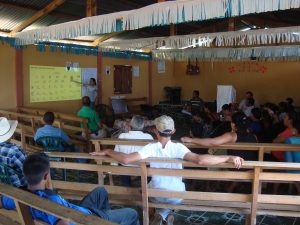These are resources for PICSA trainers to use, alongside the PICSA Manual, when training extension workers in PICSA.
How to prepare for PICSA?
Adequate preparation is vital to ensure that PICSA is implemented effectively. The ‘How to prepare for PICSA?’ guide should be used alongside the PICSA Manual to help put this preparation in place.
How to prepare for PICSA (pdf)
Overview of PICSA
This presentation explains the PICSA approach, including its development and where it has been implemented. It also outlines the overall aims of using PICSA with farmers, explains the PICSA timeline and lays out the step-by-step approach.
PICSA Trainers’ Information Sheet
This is a guide for trainers conducting training of field staff in the PICSA approach. It goes step-by-step through all the sessions that should be included in PICSA training. This resource should be used alongside the Manual to organise and facilitate training workshops.

PICSA Trainers Information Sheet (pdf)
PICSA Approach Diagram
This diagram shows the different components of PICSA and how they all fit together to help farmers’ planning and decision-making. It also includes the two key principles of PICSA. It may be explained as follows:
- PICSA places farmers at the very centre of its approach. Farmers face significant challenges and opportunities that are associated with climate and weather, as well as other physical, social and economic factors
- The PICSA approach introduces climate information to farmers in the form of both historical climate data and seasonal and short-term forecasts.
- PICSA also helps farmers to consider locally available crop, livestock and livelihood options that could help them to deal with the challenges and opportunities they face.
- Finally, PICSA uses participatory decision-making tools to combine these elements and help farmers to make informed decisions.
- The principle of the ‘The Farmer Decides’ emphasises that farmers are best placed to make decisions about their agricultural practices, because they have detailed knowledge of their farm, system and environment, and they also face the consequences (whether favourable or unfavourable) of their decisions.
- The principle of ‘Options by Context’ recognises that different farmers work in different contexts (such as climate, land, assets, ambitions, and attitudes to risk). They should therefore make decisions that work best for their individual contexts.
